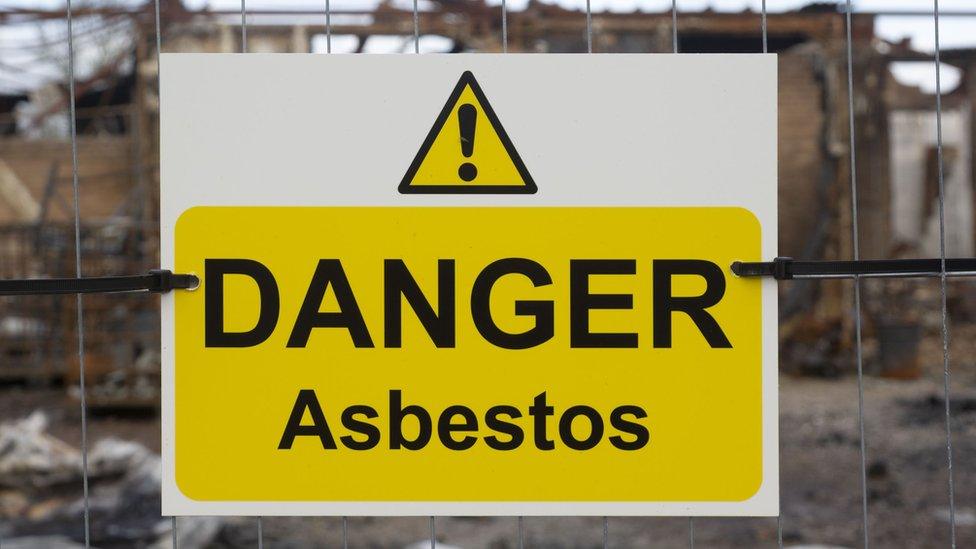Government rejects asbestos removal petition
- Published

The government has rejected a petition from more than 10,000 people asking for the removal of asbestos over the next 40 years and an asbestos register.
Asbestos is a material which if inhaled can cause cancer and is the biggest cause of work-related deaths in the UK.
The petition said "the most high-risk settings are schools and hospitals."
In its response, the government said clear evidence was needed that the two recommendations would improve health outcomes.
More than, 5,000 people still die from Asbestos related diseases in the UK every year according to the Health and Safety Executive., external
'Minimise risk'
The petition, external wanted the government to commit to two recommendations made by a 2022 work and pensions committee inquiry into the management of asbestos.
It said: "We do not know where all the asbestos is in the country so we need a central register, and we need to make a plan for its safe removal over the next 40 years."
In its report, external, the work and pensions committee said the government "must commit to a strategy to remove all asbestos from public and commercial buildings within 40 years".
The report highlighted how despite being banned more than two decades ago, asbestos is the single greatest cause of work-related fatalities in the UK.
The committee also said that with asbestos still in around 300,000 non-domestic buildings and the likely disturbance from net zero retrofitting, "the reliance on the current asbestos regulations will not be good enough".
The government said it "understands concerns about asbestos in buildings" and "will continue to consider how we can improve the system to minimise the risk of exposure to asbestos."
But it added: "Great Britain has a mature and comprehensive plan to manage asbestos risk that aligns with the best evidence currently available."
The government said this is through the implementation of Control of Asbestos Regulations 2012., external
'Not sustainable'
Work associated with removing asbestos can release asbestos fibres, increasing the risk of exposure, the government argues.
It says it would only "advocate more proactive removal of asbestos from buildings if there is compelling evidence that the increase in exposure for workers removing asbestos is justified in terms of reduced risk to building users".
But it insists the evidence did not currently exist.
Liz Darlison, Chief Executive of Mesothelioma UK, the national asbestos-related charity which is running a campaign for asbestos removal, said: "Responses to the petition highlight the breadth of support for government intervention. Asbestos continues to kill thousands of people in the UK each year. There are measures that can be taken to address this and the public have spoken.
"The government MUST take action! There is cross party support for a national asbestos register and a phased removal, so they must make this a priority."
The work and pensions committee said it was short-sighted to leave asbestos in place in buildings, even if they are well-protected and in good condition.
Such buildings will not last forever and a "policy of waiting for materials containing asbestos to deteriorate before removing them is not sustainable in the long term".
They add that a "central register of information on asbestos in buildings could help to shed light on the true level of compliance and could contribute to a more effective risk-based and targeted enforcement regime."
The petition highlights that there is currently no cure for asbestos linked cancer mesothelioma, with up to 2,700 people still being diagnosed every year.
The Health and Safety Executive, which is an independent, evidence-based regulator, will review and consider any new evidence where it can help improve health outcomes.